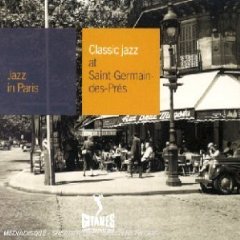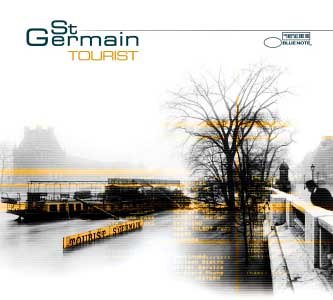Aidan Curran posted on September 14, 2008 19:00
The cultural heart of Paris is la rive gauche, the celebrated Left Bank of the Seine. Its beat comes from the district of Saint Germain des Prés.
Saint Germain has impeccable arty credentials. After the Second World War, existentialist writers like Sartre, de Beauvoir and Camus debated in Les Deux Magots and the Café Flore. A half-century before that, Oscar Wilde passed away in his final home, a room at the Hotel Alsace on the rue des Beaux-Arts.
A fat, bearded Jim Morrison would get raucously drunk in those same cafés. Continuing on his tourist trail, he sought out and stayed for weeks in the very hotel room where Wilde died. Morrison died soon after; rumour has it that he expired not in his apartment tub in Le Marais across town, but in a Saint Germain nightclub and was unceremoniously dumped back at his flat.
(There’s no connection between this area and Paris Saint Germain football club. PSG are named after Saint Germain en Laye, an affluent town west of Paris where the club still train.)
Today the Boulevard Saint Germain still buzzes with activity. In front of the street's large old church, especially on Sundays, there are exhibitions and happenings and street performers. You're sure to find musicians there, but they won't be playing 'Wonderwall' or 'Hallelujah' - not on those clarinets and double-basses. Saint Germain is the traditional home of jazz in Paris.
 The Saint Germain jazz boom happened in the '40s and '50s. True, before the Second World War Django Reinhardt had been playing successfully around Paris with Stephane Grapelli and their group, Le Hot Club de France. (Trivia: the Hot Club de France were one of the first music groups to have a lead guitarist supported by a rhythm guitarist. Today most four- or five- piece rock bands line out in this formation.) But Django's greatest popularity came with his 1951 residency at the Club Saint Germain on rue Saint Benoît.
The Saint Germain jazz boom happened in the '40s and '50s. True, before the Second World War Django Reinhardt had been playing successfully around Paris with Stephane Grapelli and their group, Le Hot Club de France. (Trivia: the Hot Club de France were one of the first music groups to have a lead guitarist supported by a rhythm guitarist. Today most four- or five- piece rock bands line out in this formation.) But Django's greatest popularity came with his 1951 residency at the Club Saint Germain on rue Saint Benoît.
Saint Germain was where bebop first hit Europe. The sleekness and melancholia of the new U.S. jazz sound was mother's milk to the dark-dressed, Gaulois-smoking, hip young artists in the clubs of the area. Local singers and artists like Boris Vian and Juliette Greco became French icons.
Miles Davis ruled here when he stayed in the French capital in the late 1950s. The monument to his Paris reign is his mournful soundtrack to Louis Malle's 'Ascenseur Pour L'Echauffaud'. One of the greatest and best-loved recordings in jazz history, Davis wrote and recorded it in a couple of days. The film's most famous scene and the score's best known section, when Jeanne Moreau wanders aimlessly along late-night streets, is the essence of Paris.
Around this same period, a jobbing piano player called Lucien Ginsburg started appearing in the smaller Saint Germain bars. Already in his early thirties when he went in, he emerged from those bars as Serge Gainsbourg, one of pop’s most influential figures. Gainsbourg lived in on rue de Verneuil, between the Boulevard Saint Germain and the Musée d’Orsay, and today his daughter Charlotte plans to turn the former family home into a Serge museum.
Those intimate jazz bars of Miles and Serge and Django have become imitation supper clubs and chic restaurants. Traipsing along the Boulevard Saint Germain today, Malle's heroine would find designer boutiques strung like rosary beads the length of the street.
 But Saint Germain is still synonymous with jazz. Music shops and souvenir stands sell cheap compilations that bear the street's name and trade on its image. A jazz festival takes place here every year, but it feels more like a nostalgic ritual than an organic gathering.
But Saint Germain is still synonymous with jazz. Music shops and souvenir stands sell cheap compilations that bear the street's name and trade on its image. A jazz festival takes place here every year, but it feels more like a nostalgic ritual than an organic gathering.
However, there are still fresh sounds here. French musician Ludovic Navarre makes records under the name Saint Germain. You probably know his 2001 album 'Tourist' (left), which took familiar old Left Bank jazz and revitalised it with contemporary electronica and reggae rhythms.
Ironically, around the world it has been played to death in exactly the sort of wine bars and boutiques that have smothered the music's heartland.
But 'Tourist' still sounds fantastic. In Dublin your blogger-to-be, living with French flatmates, listened to it late at night while wondering about a move to Paris. The album still reminds us of the expectations and dreams we had about The Great Leap Forward.
Here's the best-known track from 'Tourist' - the Marlene Shaw-sampling 'Rose Rouge'. Oddly enough, the video is filmed around the Moulin Rouge, Pigalle and Montmartre in the north of Paris, far from Saint Germain in the south city centre:
More ...
[Read More...]